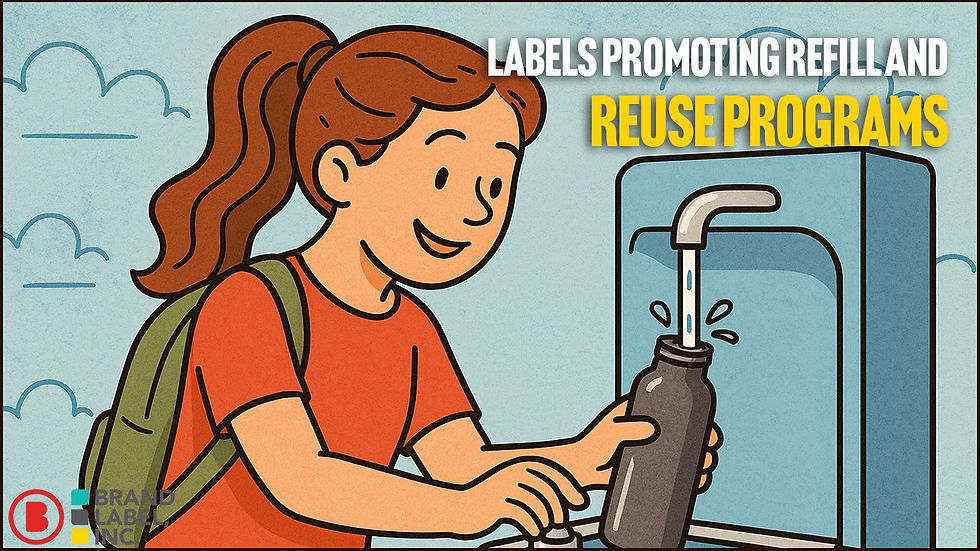The Role of Labels in Promoting Refill and Reuse Programs
- Barrett Matlock

- Aug 12
- 1 min read

Driving Awareness and Engagement
Labels serve as a direct communication channel between brands and consumers, making them a powerful tool to promote refill and reuse initiatives. By featuring clear messages, icons, or QR codes that highlight a product’s refillability, labels help inform consumers about their options and encourage them to participate. This visibility is crucial for creating awareness and building trust in sustainable programs.
Guiding Consumer Behavior
Effective labels not only inform but also guide action. Instructions on how to return, clean, or refill a container—paired with easy-to-understand visuals—make the process straightforward. Labels can also provide details on refill station locations, incentives for participation, or step-by-step usage guidance. By reducing uncertainty, labels remove barriers that might otherwise discourage consumers from reusing packaging.
Enhancing Brand Commitment to Sustainability
Using labels to promote refill and reuse programs reinforces a brand’s commitment to environmental responsibility. When consumers repeatedly see messaging about sustainability, it strengthens brand loyalty and positions the company as an eco-conscious leader. High-quality, durable labels that withstand multiple uses also demonstrate that the brand has invested in a program designed for long-term impact.
Leveraging Technology for Deeper Engagement
Modern labels can incorporate smart features like NFC tags or scannable QR codes to connect consumers to digital resources. These might include refill station maps, instructional videos, reward program sign-ups, or tracking of individual environmental impact. This blend of physical and digital engagement keeps consumers connected to the brand’s sustainability efforts long after the initial purchase.
This article is purely for educational purposes.




Comments